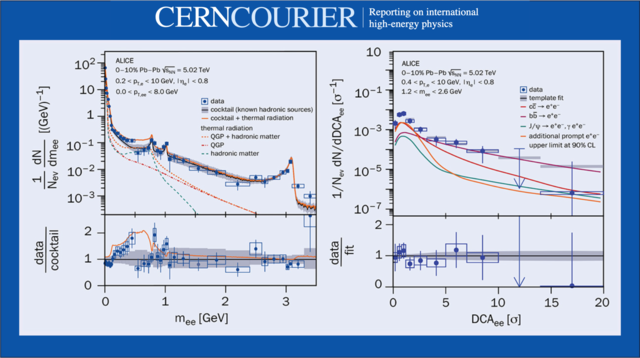
Left: Dielectron invariant-mass distribution in central Pb-Pb collisions compared to a cocktail of known hadronic decay contributions and a state-of-the-art expanding-fireball model. Right: Dielectron offset at the collision vertex, expressed in terms of the pair variable DCAee in the IMR compared to template distributions from Monte Carlo simulations. Source: arXiv:2308.16704
Published in CERN Courier Jan-Feb 2024
Link to the article
A new approach to separate the heavy-flavour contribution experimentally has been employed for the first time at the LHC!
Collisions between lead ions at the LHC produce the hottest system ever created in the lab, exceeding those in stellar interiors by about a factor of 105. At such temperatures, nucleons no longer exist and quark–gluon plasma (QGP) is formed. Yet, a precise measurement of the initial temperature of the QGP created in these collisions remains challenging. Information about the early stage of the collision gets washed out because the system constituents continue to interact as it evolves. As a result, deriving the initial temperature from the hadronic final state requires a model-dependent extrapolation of system properties (such as energy density) by more than an order of magnitude.
In contrast, electromagnetic radiation in the form of real and virtual photons escapes the strongly interacting system. Moreover, virtual photons – emerging in the final state as electron–positron pairs (dielectrons) – carry mass, which allows early and late emission stages to be separated. Find out more in the article!
Further reading: ALICE Collab. 2023 arXiv:2308.16704.
